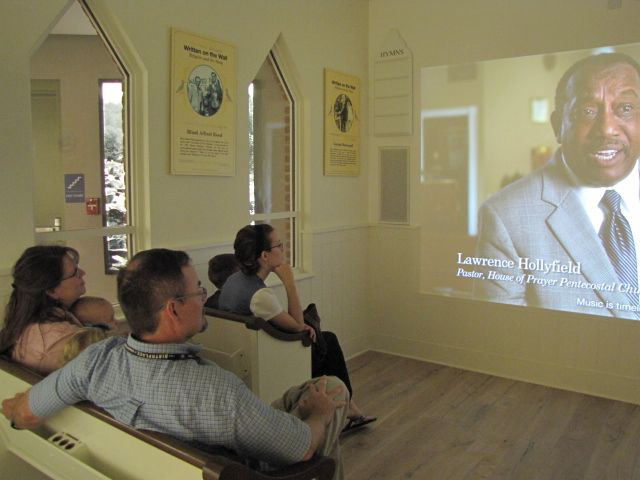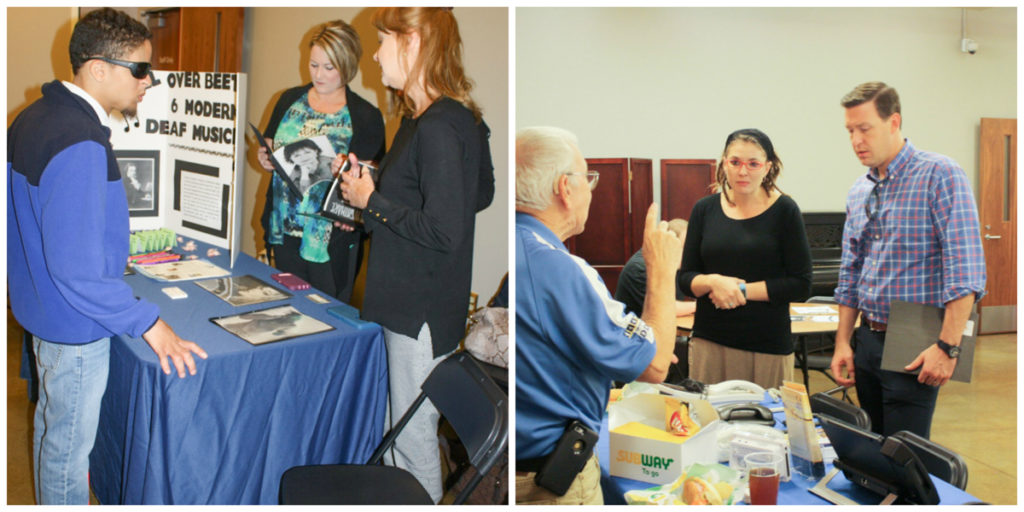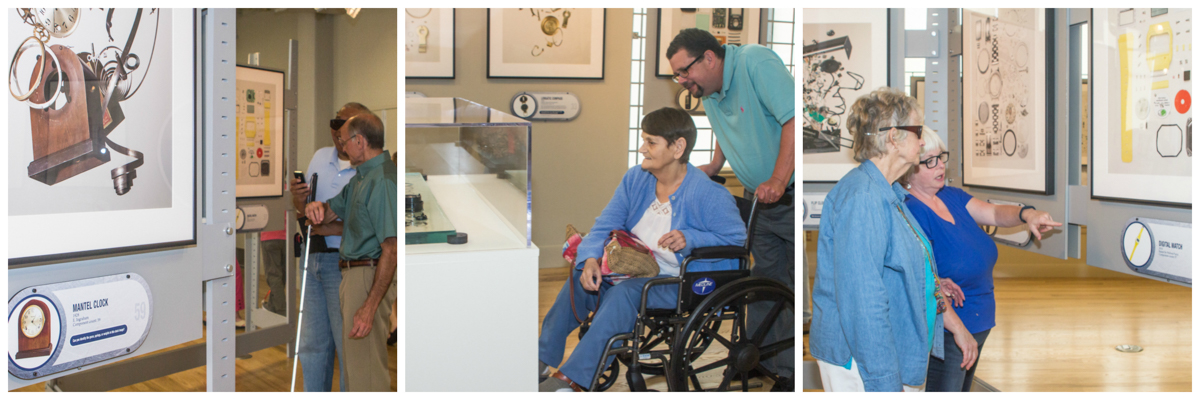We all need assistance at some point in our everyday life, no matter the range of our abilities. Often, these needs ultimately put us in a position of relying on the consideration and preparation of others, usually strangers.
Some examples where there could be a need for assistance are minor injuries like a sprained ankle, maybe something like an eye procedure that causes temporary sight issues, or even accommodations for a small child. These types of things are situations that we all encounter at least at some point in our lives. But there are other members of our community who need accommodations that may not always come to mind when we are planning events, experiences, or programs – for instance, individuals with seeing, hearing, or mobility challenges. However, don’t let the word challenges misguide you – these fellow citizens are very motivated and as “able” as most of us. They enjoy the same things, and with the same small amounts of consideration, they can take part in all that the world has to offer.
I have always thought myself to be sensitive to those who are considered to be dis- or differently abled, and I guess this is most likely a result of minor physical birth defects that I have and the over-reactions to these that I have experienced throughout my life. Even though I had my own experiences, I recently learned a lot and gained some valuable insights from working with a couple of local agencies who serve these community members and from some of their individual clients as well. These relationships and exercises came about as part of the museum’s recent completion of the Museum Assessment Program, or MAP, through the American Alliance of Museums.
When our museum first opened in 2014, I assisted with some of the efforts in making sure that we are ADA compliant in the area of mobility, and as part of my graduate studies, I also researched the areas of visual and hearing compliance. Therefore, I was happy to take the lead on the accessibility learning and activity that was part of our MAP experience. Part of this activity was to reach out to members of the community to come in to the museum as visitors and give us feedback on their experiences. I was able to recruit two area organizations – the Appalachian Independence Center (AIC) in Abingdon, Virginia, and the Virginia Department for the Blind and Vision Impaired (DBVI) here in Bristol. Both agencies were very gracious in bringing multiple staff members and clients who provided us with extremely valuable information regarding accessibility elements that were already in place in the museum as well as candid suggestions for things that needed improvement.

One conversation between Museum Director Jessica Turner, myself, and a DVBI employee named Debbie Able packed a particularly powerful punch. Debbie, who happens to be blind, told us that she had visited the museum previously with a companion to assist her and that she joined as a member at the same time. I asked her about her overall experience in her previous visits to the museum – she obviously enjoyed the museum but I was surprised to hear her say that she felt like she had missed out and express a wish that she could have experienced more during those visits.
I remember looking at Jessica, and we both had the same expression of concern on our faces. This was a big deal – and something that we both agreed needed immediate attention – and so we asked for more feedback on ways to improve a museum visit for someone who might need to approach our content in a different manner than we had planned for within the exhibit layout or format. The first things that we talked about were ways to address interpretation of our content for those with visual and aural challenges. This led us to discuss technology-based solutions like audio tours, Braille captioning, and large-text labeling and gallery guides. From our conversation, it also became apparent that even when people with disabilities visit a museum with a companion who we may think will assist them, we should not assume that their companion has the knowledge or even intent to help with interpreting our exhibits and content. With the depth of time and energy that we can provide in a scheduled guided tour that addresses our visitors’ needs, we can assure that they have the best experience possible.
Since these initial visits during the MAP exercise, we have held training classes for museum staff and docents conducted by the AIC and DBVI, and these have provided invaluable information and perspectives for us to use in preparing solutions for making our museum accessible and enjoyable for everyone. During these trainings, museum staff and docents were given the opportunity to experience the museum in the same way a disabled visitor might.

Docent Mary Geiger was especially moved by the experience, saying: “The instructors were informative on how to approach a visually impaired visitor, how to physically contact them, how to lead, and why various movements and verbiage were necessary. Additionally, I found invaluable the experience with the blindfold, learning the feel of degrees of darkness and to trust a person leading. Coupled with this was the exercise of actually leading an 11-year-old visually impaired visitor. This visitor was mature and articulate regarding what I was doing correctly or not (I flunked “doors,” which gave us both a good laugh!). All in all, I will feel more comfortable leading such visitors now.” Docent Barbara Smith agreed, saying: “Touring with a visually impaired person changed my perspective. I noticed things I had not seen before, I was asked about things I took for granted, and I needed to explain things for which I had no words. After this tour I had an even better understanding of the museum’s content.”
To follow up on this training – and in line with October being Disability Employment Awareness Month – the museum also held an event on October 6 to encourage our community to view their everyday surroundings and experiences through the eyes of a differently abled person. Various agencies set up tables with information to share with interested parties, enabling us to make important contacts with these agencies and for them to talk to each other about possible ways to work together in the future.

All of these activities and training sessions have helped us to see our museum in a new light, to look at different ways to approach our content, and to begin working on solutions that take us beyond simple ADA compliance to providing a museum experience that brings enjoyment to all!
Scotty Almany is the Digital Resources Manager & Catalog Associate for the Birthplace of Country Music Museum. He would like to thank all of the nonprofit agencies who donated their time to attend the event on October 6 with special appreciation to the DBVI and AIC, who have given so freely and generously of their time. For more information on accessibility tours, please contact the Birthplace of Country Music Museum at (423) 573-1927 or info@birthplaceofcountrymusic.org. And if you have any suggestions or ideas for how our museum can become a more inclusive environment for those with different abilities, please feel free to contact us!


